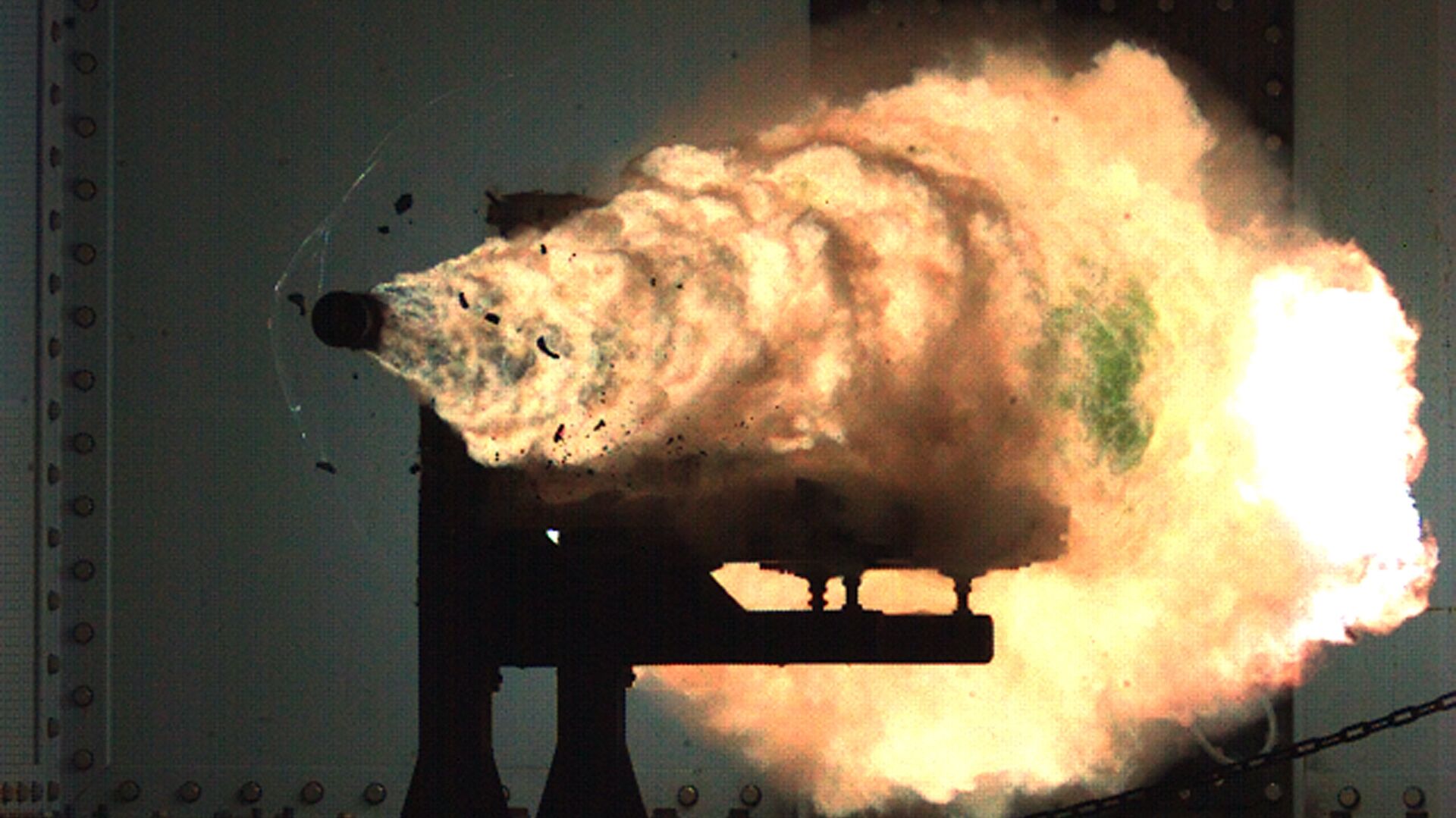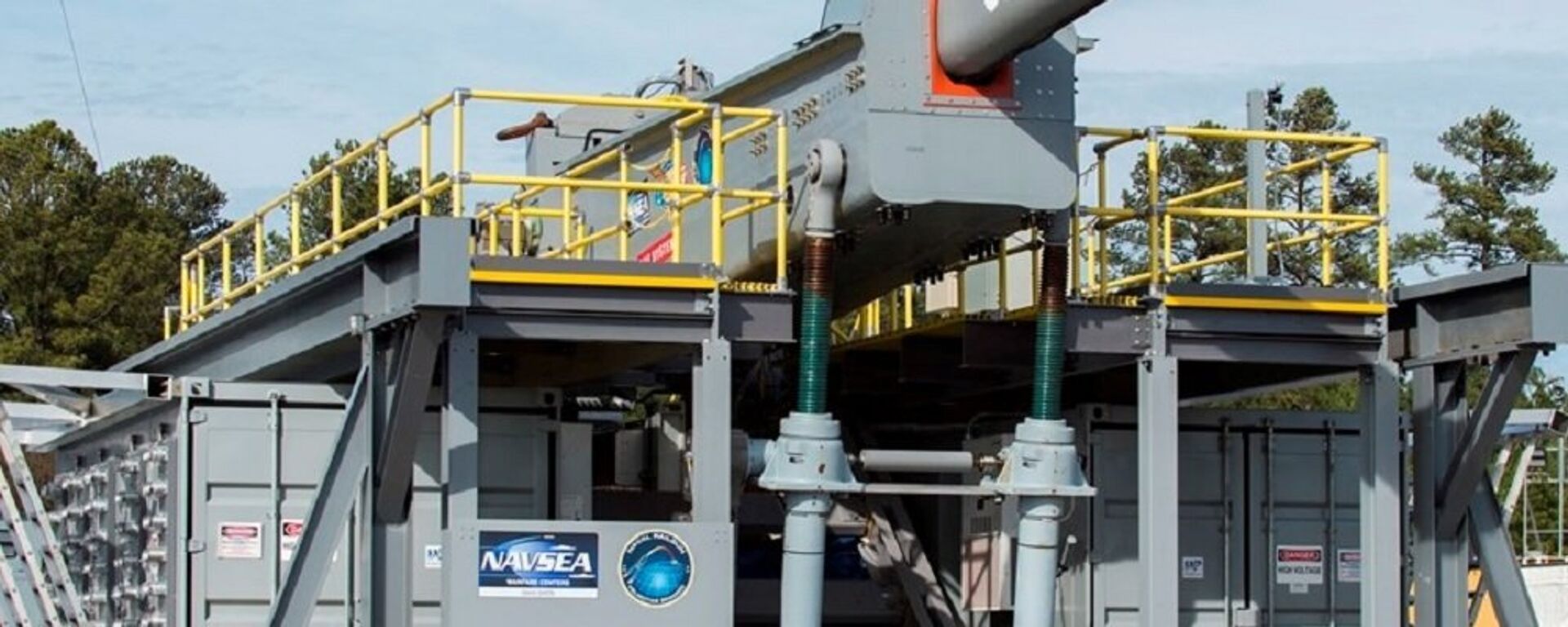https://sputnikglobe.com/20220105/japan-reportedly-plans-to-bolster-its-defences-with-railguns-capable-of-downing-hypersonic-missiles-1092045507.html
Japan Reportedly Plans to Bolster Its Defences With Railguns Capable of Downing Hypersonic Missiles
Japan Reportedly Plans to Bolster Its Defences With Railguns Capable of Downing Hypersonic Missiles
Sputnik International
Japanese Defence Ministry is planning to boost the country's anti-air defences by developing and deploying "railguns", which would be capable of shooting down hypersonic missiles
2022-01-05T19:48+0000
2022-01-05T19:48+0000
2022-01-05T19:48+0000
asia
japan
railgun
electromagnetic railgun (emrg)
https://cdn1.img.sputnikglobe.com/img/105889/60/1058896047_0:198:2100:1379_1920x0_80_0_0_e56094c7fe9a2ee8f336d2035b43cf80.jpg
The Japanese Defence Ministry is planning to boost the country's anti-air defences by developing and deploying "railguns", which would be capable of shooting down hypersonic missiles, the Nikkei agency has reported. Hypersonic missiles are believed to be capable of penetrating existing anti-air defences using interceptor missiles due to their speed and ability to change their course mid-flight.According to Nikkei, the development of a railgun air-defence system should be finished by the end of the current decade. The first deployment of the novel weapon is reportedly expected by 2030.Railguns shoot metal slugs at speeds starting at 2,300 metres per second, which is faster than any existing munition, including interceptor missiles. However, instead of using powder or any other mixture as a propellant, the railgun utilises two rails that create a powerful magnetic field in between. This magnetic field is then used to propel a metal slug with great force.The concept of a railgun is not new and several countries, including the US and China, have been experimenting with it for several years now. They have been exploring the possibilities of using them as a ship-based weapon or a gun for troops. However, none of the world's militaries have begun producing these guns en masse yet, as they are still figuring out the optimal design.These guns require advanced materials that can create powerful magnetic fields. Railguns also consume enormous amounts of energy per shot. Attempts of turning it into mobile artillery or a hand-carried gun have so far been met with the challenge of reducing its power consumption or making small and high-volume energy capacitors.The news comes as the Japanese government condemned the 5 January launch of an unidentified missile by North Korea. A projectile, which is presumed to be a ballistic missile, was fired by the DPRK military into the Japan Sea without prior notice and despite earlier objections from North Korea's neighbours.
https://sputnikglobe.com/20190614/watch-chinese-ship-test-cutting-edge-railgun-1075871973.html
japan
Sputnik International
feedback@sputniknews.com
+74956456601
MIA „Rossiya Segodnya“
2022
Tim Korso
https://cdn1.img.sputnikglobe.com/img/07e6/03/0d/1093831826_0:0:216:216_100x100_80_0_0_e3f43a960af0c6c99f7eb8ccbf5f812c.jpg
Tim Korso
https://cdn1.img.sputnikglobe.com/img/07e6/03/0d/1093831826_0:0:216:216_100x100_80_0_0_e3f43a960af0c6c99f7eb8ccbf5f812c.jpg
News
en_EN
Sputnik International
feedback@sputniknews.com
+74956456601
MIA „Rossiya Segodnya“
Sputnik International
feedback@sputniknews.com
+74956456601
MIA „Rossiya Segodnya“
Tim Korso
https://cdn1.img.sputnikglobe.com/img/07e6/03/0d/1093831826_0:0:216:216_100x100_80_0_0_e3f43a960af0c6c99f7eb8ccbf5f812c.jpg
japan military, railgun development, japan air defense
japan military, railgun development, japan air defense
Japan Reportedly Plans to Bolster Its Defences With Railguns Capable of Downing Hypersonic Missiles
While not used officially by any of the world's militaries, railguns are no science fiction. The US and Chinese armed forces have been experimenting with this type of weapon for several years now, but so far neither has produced a version that meets all of the criteria for usability on the battlefield.
The Japanese Defence Ministry is planning to boost the country's anti-air defences by developing and deploying "railguns", which would be capable of shooting down hypersonic missiles, the Nikkei agency has reported. Hypersonic missiles are believed to be capable of penetrating existing anti-air defences using interceptor missiles due to their speed and ability to change their course mid-flight.
According to Nikkei, the development of a railgun air-defence system should be finished by the end of the current decade. The first deployment of the novel weapon is reportedly expected by 2030.
Railguns shoot metal slugs at speeds starting at 2,300 metres per second, which is faster than any existing munition, including interceptor missiles. However, instead of using powder or any other mixture as a propellant, the railgun utilises two rails that create a powerful magnetic field in between. This magnetic field is then used to propel a metal slug with great force.
The concept of a railgun is not new and several countries, including
the US and China, have been experimenting with it for several years now. They have been exploring the possibilities of using them as a ship-based weapon or a gun for troops. However, none of the world's militaries have begun producing these guns en masse yet, as they are still figuring out the optimal design.
These guns require advanced materials that can create powerful magnetic fields. Railguns also consume enormous amounts of energy per shot. Attempts of turning it into mobile artillery or a hand-carried gun have so far been
met with the challenge of reducing its power consumption or making small and high-volume energy capacitors.
The news comes as the Japanese government condemned the
5 January launch of an unidentified missile by North Korea. A projectile, which is presumed to be a ballistic missile, was fired by the DPRK military into the Japan Sea without prior notice and despite earlier objections from North Korea's neighbours.




